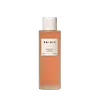What's inside
What's inside
 Key Ingredients
Key Ingredients

No key ingredients
 Benefits
Benefits

 Concerns
Concerns

No concerns
 Ingredients Side-by-side
Ingredients Side-by-side

Water
Skin ConditioningButylene Glycol
HumectantGlycerin
Humectant1,2-Hexanediol
Skin ConditioningNiacinamide
SmoothingCoffea Arabica Seed Oil
MaskingAcetyl Hexapeptide-22
AntioxidantSh-Octapeptide-4
AntioxidantSh-Pentapeptide-19
Skin ConditioningSh-Decapeptide-7
AntioxidantCaffeoyl Tripeptide-1
AntioxidantOligopeptide-28
AntioxidantRosmarinus Officinalis Extract
AntimicrobialMelia Azadirachta Leaf Extract
Skin ConditioningMelia Azadirachta Flower Extract
Skin ConditioningOcimum Sanctum Leaf Extract
Skin ConditioningFreesia Refracta Extract
Skin ConditioningMentha Piperita Leaf Extract
Skin ConditioningChamomilla Recutita Flower Extract
MaskingMonarda Didyma Leaf Extract
Skin ConditioningRosmarinus Officinalis Leaf Extract
AntimicrobialLavandula Angustifolia Flower Extract
CleansingCurcuma Longa Root Extract
MaskingCorallina Officinalis Extract
Skin ConditioningCitric Acid
BufferingGlycereth-26
HumectantPanthenol
Skin ConditioningPolyglyceryl-10 Laurate
Skin ConditioningCellulose Gum
Emulsion StabilisingPolyglyceryl-4 Laurate
EmulsifyingDipropylene Glycol
HumectantSodium Citrate
BufferingXanthan Gum
EmulsifyingCyanocobalamin
Skin ConditioningCaprylic/Capric Triglyceride
MaskingEthylhexylglycerin
Skin ConditioningLavandula Angustifolia Oil
MaskingCitrus Aurantium Bergamia Peel Oil
Pelargonium Graveolens Flower Oil
MaskingEucalyptus Globulus Leaf Oil
PerfumingLinalool
PerfumingLimonene
PerfumingCitronellol
PerfumingGeraniol
PerfumingWater, Butylene Glycol, Glycerin, 1,2-Hexanediol, Niacinamide, Coffea Arabica Seed Oil, Acetyl Hexapeptide-22, Sh-Octapeptide-4, Sh-Pentapeptide-19, Sh-Decapeptide-7, Caffeoyl Tripeptide-1, Oligopeptide-28, Rosmarinus Officinalis Extract, Melia Azadirachta Leaf Extract, Melia Azadirachta Flower Extract, Ocimum Sanctum Leaf Extract, Freesia Refracta Extract, Mentha Piperita Leaf Extract, Chamomilla Recutita Flower Extract, Monarda Didyma Leaf Extract, Rosmarinus Officinalis Leaf Extract, Lavandula Angustifolia Flower Extract, Curcuma Longa Root Extract, Corallina Officinalis Extract, Citric Acid, Glycereth-26, Panthenol, Polyglyceryl-10 Laurate, Cellulose Gum, Polyglyceryl-4 Laurate, Dipropylene Glycol, Sodium Citrate, Xanthan Gum, Cyanocobalamin, Caprylic/Capric Triglyceride, Ethylhexylglycerin, Lavandula Angustifolia Oil, Citrus Aurantium Bergamia Peel Oil, Pelargonium Graveolens Flower Oil, Eucalyptus Globulus Leaf Oil, Linalool, Limonene, Citronellol, Geraniol
 Reviews
Reviews

Ingredients Explained
These ingredients are found in both products.
Ingredients higher up in an ingredient list are typically present in a larger amount.
1,2-Hexanediol is a synthetic liquid and another multi-functional powerhouse.
It is a:
- Humectant, drawing moisture into the skin
- Emollient, helping to soften skin
- Solvent, dispersing and stabilizing formulas
- Preservative booster, enhancing the antimicrobial activity of other preservatives
Butylene Glycol (or BG) is used within cosmetic products for a few different reasons:
Overall, Butylene Glycol is a safe and well-rounded ingredient that works well with other ingredients.
Though this ingredient works well with most skin types, some people with sensitive skin may experience a reaction such as allergic rashes, closed comedones, or itchiness.
Learn more about Butylene GlycolCellulose Gum is a water-soluble polymer that comes from cellulose. It is used to change the texture of a product and to help stabilize emulsions.
As an emulsifier, cellulose gum specifically thicken the texture of water-based products.
This ingredient is considered hypoallergenic and non-toxic. Cellulose Gum can be found in cosmetics, food, and other household goods such as paper products.
Learn more about Cellulose GumEthylhexylglycerin (we can't pronounce this either) is commonly used as a preservative and skin softener. It is derived from glyceryl.
You might see Ethylhexylglycerin often paired with other preservatives such as phenoxyethanol. Ethylhexylglycerin has been found to increase the effectiveness of these other preservatives.
Glycerin is already naturally found in your skin. It helps moisturize and protect your skin.
A study from 2016 found glycerin to be more effective as a humectant than AHAs and hyaluronic acid.
As a humectant, it helps the skin stay hydrated by pulling moisture to your skin. The low molecular weight of glycerin allows it to pull moisture into the deeper layers of your skin.
Hydrated skin improves your skin barrier; Your skin barrier helps protect against irritants and bacteria.
Glycerin has also been found to have antimicrobial and antiviral properties. Due to these properties, glycerin is often used in wound and burn treatments.
In cosmetics, glycerin is usually derived from plants such as soybean or palm. However, it can also be sourced from animals, such as tallow or animal fat.
This ingredient is organic, colorless, odorless, and non-toxic.
Glycerin is the name for this ingredient in American English. British English uses Glycerol/Glycerine.
Learn more about GlycerinWater. It's the most common cosmetic ingredient of all. You'll usually see it at the top of ingredient lists, meaning that it makes up the largest part of the product.
So why is it so popular? Water most often acts as a solvent - this means that it helps dissolve other ingredients into the formulation.
You'll also recognize water as that liquid we all need to stay alive. If you see this, drink a glass of water. Stay hydrated!
Learn more about Water